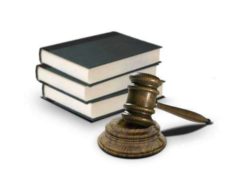Table of Contents

McCulloch v. Maryland (1819)
Gibbons v. Ogden (1824)
National Labor Relations Board v. Jones & Laughlin Steel Corp. (1937)
Conclusion
1819 case of McCulloch v. Maryland addressed the scope of powers held by the Federal Government and expanded them in provoking the creation of the doctrine of implied powers granted under the Constitution. The Supreme Court thus placed limits of states to act against programs undertaken by the Federal Government.
To provide justification for this decision, the Court appealed to Clause 18, Section 8 of article Iof the Constitution, as it is considered to represent the “Necessary and Proper Clause.” This section grants Congress the ability to pass legislation which it finds “necessary and proper” for the task of exercising the other rights expressly given by the Constitution.
The implied powers doctrine came out of an attempt by the State of Maryland to block under the law the operations of the Federally-backed Second Bank of the United States. The State Legislature thus placed a tax on the notes held by all banks originally established outside of the State. Though it did not specifically mention the Second Bank, the Supreme Court found that it could reasonably establish that this was the purpose of the law, given that no other out-of-state banks then existed in Maryland.
Under the heading of the legislation, the Second Bank’s president, James McCulloch, had been prosecuted after he refused to pay the required fee. On appeal, the State made the
the argument that the Constitution does not mention banks and that the Second Bank
of the United States thus lacked Constitutional protection. The Supreme Court rejected the actions of the State by finding that the Federal Government held implied powers under the Constitution, such as it had exercised by creating Federal banks.
Chief Justice Marshall wrote the Court’s opinion, referring to the political concept of the social contract to establish the binding power of the Federal Government as provided by the Constitution. Marshall then observed that the Constitution could not specifically address all of the specific ways in which the Government would fulfill the duties to which
it was generally obligated, but rather implied the functions which the Government might take on to meet its responsibilities.
The opinion referred to the Necessary and Proper Clause as the place in which the implied powers the concept is explicitly addressed and that this stipulation was classed with
other Congressional powers, rather than their limitations. As expressed in Marshall’s opinion, the implied powers doctrine thereby established the broadly-defined the ability of Congress to use powers which it was not barred from exercising rather than those which it was explicitly given the right to use.
Marshall did not place the existence of implied powers as an absolute limitation on other
rights, but specified that an implied power might be limited by the finding that a right already granted to states or individual citizens conflicted with it. The outcome of McCulloch v. Maryland nevertheless placed new and wide-reaching limitations on the power of states and signaled the beginning of a newly broadened understanding of Federal power, particularly over individual State governments and laws.


























